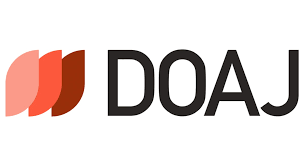Un currículo para la carrera de ciencias de la computación basada en los cursos de coursera
Resumen
Los cursos masivos abiertos en línea (conocidos como MOOC, por sus siglas en inglés) constituyen un fenómeno reciente que ha cambiado la perspectiva sobre la formación y el futuro de las instituciones educativas. Cientos de miles de personas han cursado este tipo de cursos en los últimos años. Sin embargo, para un estudiante que se encuentra con toda la oferta educativa que hoy está disponible, no le es fácil definir una estrategia curricular de formación que le permita ganar una formación sólida en una carrera. Para avanzar un paso en ese sentido, este trabajo analiza los cursos de Ciencias de la Computación que hoy ofrece Coursera, una de las plataformas más populares de difusión de este tipo de cursos. Se agrupan los cursos disponibles en Coursera y se analizan desde la perspectiva de diseño curricular propuesto para la carrera de Ciencias de la Computación por reconocidas instituciones. Finalmente, se concluye con una selección y ordenamiento de 45 cursos que permitiría a un estudiante obtener un currículo profesional para la carrera alineado a esa propuesta. Se analizan los retos y amenazas que llevaría seguir este camino tanto para los estudiantes como para las instituciones educativas. PALABRAS CLAVE: Cursos abiertos masivos en línea; Ciencias de Computación; Diseño curricular.Citas
Allen, I. E. y Seaman, J. (2013). Changing Course: Ten Years of Tracking Online Education in the United States, LLC, Pearson.
Beaven, T., Hauck, M., Comas-Quinn, A., Lewis, T. y Arcos, B. d. l. (2014). MOOCs: Striking the Right Balance between Facilitation and Self-Determination. MERLOT Journal of Online Learning and Teaching 10(1), 31-43.
Ben-Ari, M. M. (2013). MOOCs on Introductory Programming: A Travelogue. ACM Inroads, 4(2), 58-61.
Blass, E. y Hayward, P. (2014). Innovation in higher education; will there be a role for “the academe/university” in 2025? Eur J Futures Res, 2(41), 41-49.
Cerf, V. G. (2013). Running AMOOC. IEEE Computer Society, IEEE, May/June(-), 87-88.
Egerstedt, M. (2013). Controls for the Masses. IEEE Control Systems Magazine, August(-), 40-44.
Gallagher, S. y LaBrie, J. (2012). Online Learning 2.0: Strategies for a Mature Market. Continuing Higher Education Review, 76(-), 65-73.
Hyman, P. (2012). In the Year of Disruptive Education. Communications of the ACM, 55(12), 20-22.
Liyanagunawardena, T. R., Adams, A. A. y Williams, S. A. (2013). MOOCs: A Systematic Study of the Published Literature 2008-2012. The International Review of Research in Open and Distance Learning, 14(3), 202-227.
McKinsey, J., Joseph, S., Fox, A. y Garcia, D. D. (2014). Remote Pair Programming (RPP) in Massively Open Online Courses (MOOCs). En Procedimientos de ITICSE '14, (pp. 340-341). Uppsala, Sweden: ACM.
Miguel, J., Caballé, S. y Prieto, J. (2013). Providing Information Security to MOOC: Towards effective student authentication. En Procedimientos de 5th International Conference on Intelligent Networking and Collaborative Systems, (pp. 289-292). IEEE.
Morris, L. V. (2013). MOOCs, Emerging Technologies, and Quality. Innov High Educ, 38(251–252.
Sahami, M., Danyluk, A., Fincher, S., Fisher, K., Grossman, D., Hawthorne, E., Katz, R., LeBlanc, R., Reed, D., Roach, S., Cuadros-Vargas, E., Dodge, R., France, R., Kumar, A., Robinson, B., Seker, R. y Thompson, A. (2013). Computer Science Curricula 2013: Curriculum Guidelines for Undergraduate Degree Programs in Computer Science, Association for Computing Machinery (ACM)-IEEE Computer Society.
Schmidt, D. C. y McCormick, Z. (2013). Producing and Delivering a MOOC on Pattern-Oriented Software Architecture for Concurrent and Networked Software. En Procedimientos de SPLASH ’13, (pp. 167-176). Indianapolis, Indiana, USA: ACM.
Severance, C. (2013). MOOCs: An Insider’s View. Computer: Computing Education, October 2013(1), 93-96.
Vihavainen, A., Luukkainen, M. y Kurhila, J. (2012). Multi-faceted Support for MOOC in Programming. En Procedimientos de SIGITE’12, (pp. 171-176). Calgary, Alberta, Canada: ACM.
Willems, C., Jasper, J. y Meinel, C. (2013). Introducing Hands-On Experience to a Massive Open Online Course on openHPI. En Procedimientos de 2013 IEEE International Conference on Teaching, Assessment and Learning for Engineering (TALE), (pp. 307-313). Bali Dynasty Resort, Kuta, Indonesia: IEEE.
Zirger, B., Rutz, E., Boyd, D., Tappel, J. y Subbian, V. (2014). Creating Pathways to Higher Education: A Cross-Disciplinary MOOC with Graduate Credit. En Procedimientos de 4th IEEE Integrated STEM Education Conference, (pp. 1-5). Princeton, NJ: IEEE.
Descargas
Archivos adicionales
Publicado
Cómo citar
Número
Sección
Licencia
Derechos de autor 2016 Rolando Aguilar, Alejandro Rosete-Suárez

Esta obra está bajo una licencia internacional Creative Commons Atribución 4.0.
Los autores/as que publiquen en esta revista aceptan las siguientes condiciones:
- Los autores/as conservan los derechos de autor y ceden a la revista el derecho de la primera publicación, con el trabajo registrado con la licencia de atribución de Creative Commons, que permite a terceros utilizar lo publicado siempre que mencionen la autoría del trabajo y a la primera publicación en esta revista.
- Los autores/as pueden realizar otros acuerdos contractuales independientes y adicionales para la distribución no exclusiva de la versión del artículo publicado en esta revista (p. ej., incluirlo en un repositorio institucional o publicarlo en un libro) siempre que indiquen claramente que el trabajo se publicó por primera vez en esta revista.







